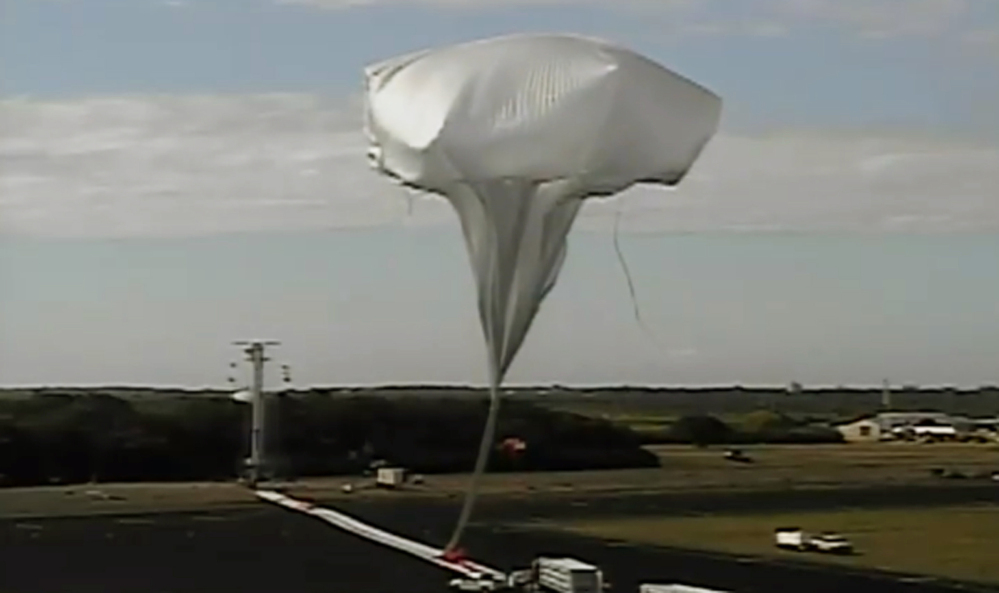LOS ANGELES — A saucer-shaped NASA vehicle launched by balloon high into Earth’s atmosphere splashed down in the Pacific Ocean on Saturday, completing a successful test of technology that could be used to land on Mars.
Since the twin Viking spacecraft landed on the red planet in 1976, NASA has relied on the same parachute design to slow landers and rovers after piercing through the thin Martian atmosphere.
The $150 million experimental flight tested a novel vehicle and a giant parachute designed to deliver heavier spacecraft and eventually astronauts.
Despite small problems like the giant parachute not deploying fully, NASA deemed the mission a success.
“What we just saw was a really good test,” said NASA engineer Dan Coatta with the Jet Propulsion Laboratory in Pasadena, California.
Viewers around the world with an Internet connection followed portions of the mission in real time thanks to cameras on board the vehicle that beamed back low-resolution footage.
After taking off at 11:40 a.m. from the Pacific Missile Range Facility on the Hawaiian island of Kauai, the balloon boosted the disc-shaped vehicle over the Pacific. Its rocket motor then ignited, carrying the vehicle to 34 miles high at supersonic speeds.
The environment that high up is similar to the thin Martian atmosphere. As the vehicle prepared to drop back the Earth, a tube around it expanded like a Hawaiian puffer fish, creating atmospheric drag to dramatically slow it down from Mach 4, or four times the speed of sound.
Then the parachute unfurled and guided the vehicle to an ocean splashdown about three hours later. At 110 feet in diameter, the parachute is twice as big as the one that carried the 1-ton Curiosity rover through the Martian atmosphere in 2011.
The test was postponed six times because of high winds. Winds need to be calm so that the balloon doesn’t stray into no-fly zones.
Engineers planned to analyze the data and conduct several more flights next year before deciding whether to fly the vehicle and parachute on a future Mars mission.
“We want to test them here where it’s cheaper before we send it to Mars to make sure that it’s going to work there,” project manager Mark Adler of JPL said during a pre-launch news conference in Kauai in early June. The technology envelope needs to be pushed or else humanity won’t be able to fly beyond the International Space Station in low-Earth orbit.
Send questions/comments to the editors.



Success. Please wait for the page to reload. If the page does not reload within 5 seconds, please refresh the page.
Enter your email and password to access comments.
Hi, to comment on stories you must . This profile is in addition to your subscription and website login.
Already have a commenting profile? .
Invalid username/password.
Please check your email to confirm and complete your registration.
Only subscribers are eligible to post comments. Please subscribe or login first for digital access. Here’s why.
Use the form below to reset your password. When you've submitted your account email, we will send an email with a reset code.